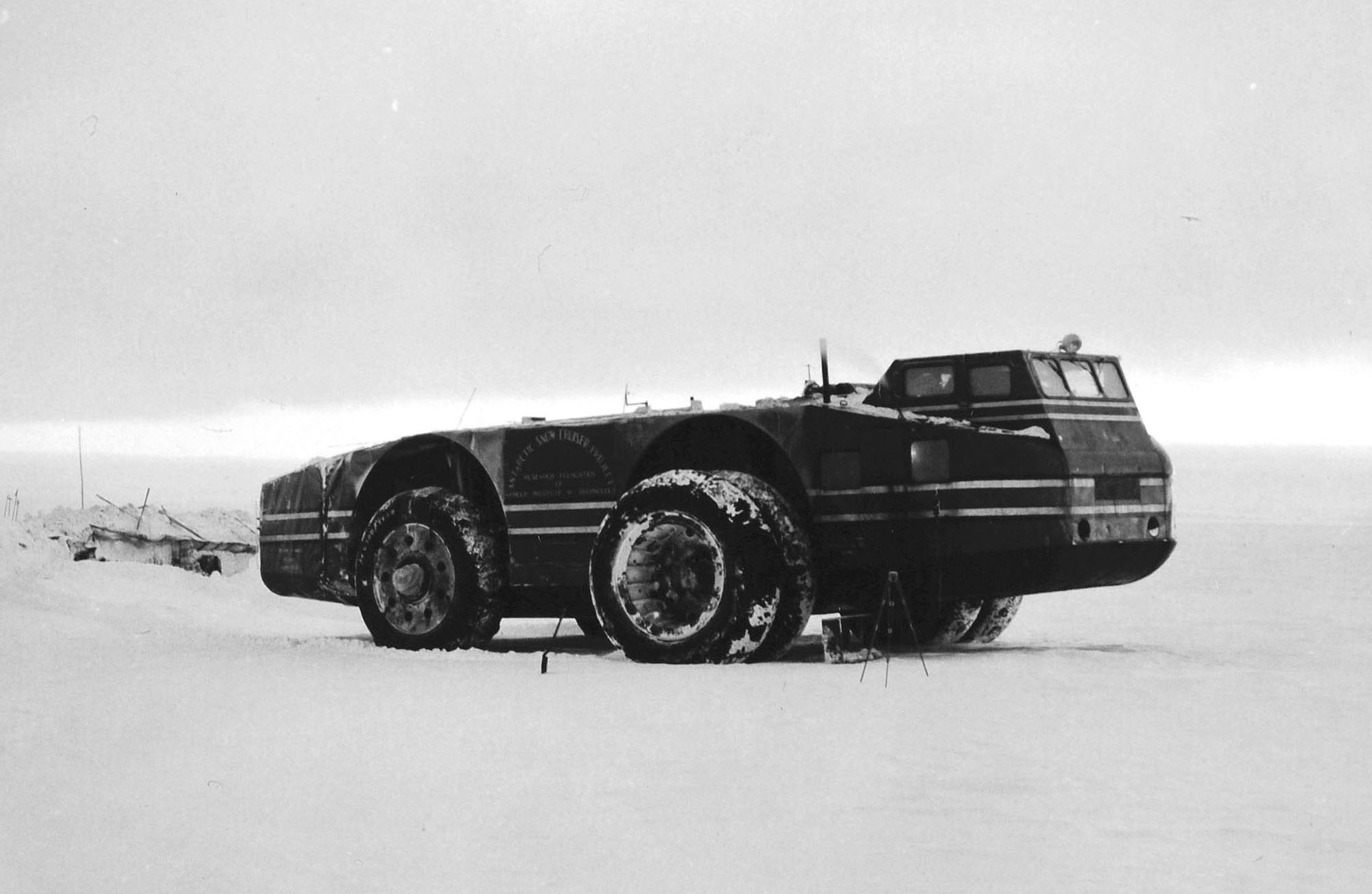|
Armour Inlet
Armour Inlet () is an ice-filled inlet indenting the north side of Siple Island just west of the Armour Peninsula, along the coast of Marie Byrd Land. The inlet was first roughly delineated from air photos taken by U.S. Navy Operation Highjump in January 1947, and named by the Advisory Committee on Antarctic Names for the Armour Institute of Technology, Chicago, which donated funds to the United States Antarctic Service, 1939–41, for purchase of the Antarctic Snow Cruiser, Snow Cruiser. References * Inlets of Antarctica Bodies of water of Marie Byrd Land {{MarieByrdLand-geo-stub ... [...More Info...] [...Related Items...] OR: [Wikipedia] [Google] [Baidu] |
Siple Island
Siple Island is a long snow-covered island lying east of Wrigley Gulf along the Getz Ice Shelf off Bakutis Coast of Marie Byrd Land, Antarctica. Its centre is located at . Its area is and it is dominated by the dormant shield volcano Mount Siple, rising to — making this the List of islands by highest point, 15th ranking island in the world by maximum elevation. The feature was first indicated as an island on U.S. Geological Survey (USGS) maps compiled from ground surveys and U.S. Navy air photos, 1959–65. Island and mountain were named by the United States Advisory Committee on Antarctic Names (US-ACAN) in 1967 in honour of the American Antarctic explorer Paul A. Siple (1909–1968), member of Richard E. Byrd, Admiral Byrd's expeditions. Geographic features * The Blob (Antarctica), The Blob - mound-shaped knoll * Recely Bluff - bluff on northeast slope of Mount Siple. See also * Composite Antarctic Gazetteer * List of Antarctic and sub-Antarctic islands * List of ... [...More Info...] [...Related Items...] OR: [Wikipedia] [Google] [Baidu] |
Armour Peninsula
Armour Peninsula () is an ice-covered peninsula situated immediately east of Armour Inlet on Siple Island, along the coast of Marie Byrd Land. It was mapped by the United States Geological Survey from ground surveys and from U.S. Navy air photos, 1959–65, and named by the Advisory Committee on Antarctic Names The Advisory Committee on Antarctic Names (ACAN or US-ACAN) is an advisory committee of the United States Board on Geographic Names responsible for recommending commemorative names for features in Antarctica. History The committee was established ... in association with Armour Inlet. References * Peninsulas of Marie Byrd Land {{MarieByrdLand-geo-stub ... [...More Info...] [...Related Items...] OR: [Wikipedia] [Google] [Baidu] |
Marie Byrd Land
Marie Byrd Land (MBL) is an unclaimed region of Antarctica. With an area of , it is the largest unclaimed territory on Earth. It was named after the wife of American naval officer Richard E. Byrd, who explored the region in the early 20th century. The territory lies in West Antarctica, east of the Ross Ice Shelf and the Ross Sea and south of the Pacific Ocean portion of the Southern Ocean, extending eastward approximately to a line between the head of the Ross Ice Shelf and Eights Coast. It stretches between 158°W and 103°24'W. The inclusion of the area between the Rockefeller Plateau and Eights Coast is based upon Byrd's exploration. Overview Because of its remoteness, even by Antarctic standards, most of Marie Byrd Land (the portion east of 150°W) has not been claimed by any sovereign state. It is by far the largest single unclaimed territory on Earth, with an area of (including Eights Coast, immediately east of Marie Byrd Land). In 1939, United States President Frankl ... [...More Info...] [...Related Items...] OR: [Wikipedia] [Google] [Baidu] |
Advisory Committee On Antarctic Names
The Advisory Committee on Antarctic Names (ACAN or US-ACAN) is an advisory committee of the United States Board on Geographic Names responsible for recommending commemorative names for features in Antarctica. History The committee was established in 1943 as the Special Committee on Antarctic Names (SCAN). It became the Advisory Committee on Antarctic Names in 1947. Fred G. Alberts was Secretary of the Committee from 1949 to 1980. By 1959, a structured nomenclature was reached, allowing for further exploration, structured mapping of the region and a unique naming system. A 1990 ACAN gazeeter of Antarctica listed 16,000 names. Description The United States does not recognise territorial boundaries within Antarctica, so ACAN assigns names to features anywhere within the continent, in consultation with other national nomenclature bodies where appropriate, as defined by the Antarctic Treaty System. The research and staff support for the ACAN is provided by the United States Geologi ... [...More Info...] [...Related Items...] OR: [Wikipedia] [Google] [Baidu] |
Armour Institute Of Technology
Illinois Institute of Technology (IIT) is a private research university in Chicago, Illinois. Tracing its history to 1890, the present name was adopted upon the merger of the Armour Institute and Lewis Institute in 1940. The university has programs in architecture, business, communications, design, engineering, industrial technology, information technology, law, psychology, and science. It is classified among "R2: Doctoral Universities – High research activity". The university's historic roots are in several 19th-century engineering and professional education institutions in the United States. In the mid 20th century, it became closely associated with trends in modernist architecture through the work of its Dean of Architecture Ludwig Mies van der Rohe, who designed its campus. The Institute of Design, Chicago-Kent College of Law, and Midwest College of Engineering were also merged into Illinois Tech. History The Sermon and The Institute In 1890, when advanced education was o ... [...More Info...] [...Related Items...] OR: [Wikipedia] [Google] [Baidu] |
Chicago
(''City in a Garden''); I Will , image_map = , map_caption = Interactive Map of Chicago , coordinates = , coordinates_footnotes = , subdivision_type = Country , subdivision_name = United States , subdivision_type1 = State , subdivision_type2 = Counties , subdivision_name1 = Illinois , subdivision_name2 = Cook and DuPage , established_title = Settled , established_date = , established_title2 = Incorporated (city) , established_date2 = , founder = Jean Baptiste Point du Sable , government_type = Mayor–council , governing_body = Chicago City Council , leader_title = Mayor , leader_name = Lori Lightfoot ( D) , leader_title1 = City Clerk , leader_name1 = Anna Valencia ( D) , unit_pref = Imperial , area_footnotes = , area_tot ... [...More Info...] [...Related Items...] OR: [Wikipedia] [Google] [Baidu] |
United States Antarctic Service
The United States Antarctic Program (or USAP; formerly known as the United States Antarctic Research Program or USARP and the United States Antarctic Service or USAS) is an organization of the United States government which has presence in the Antarctica continent. Founded in 1959, the USAP manages all U.S. scientific research and related logistics in Antarctica as well as aboard ships in the Southern Ocean. United States Antarctic Program The United States established the U.S. Antarctic Research Program (USARP) in 1959—the name was later changed to the U.S. Antarctic Program—immediately following the success of the International Geophysical Year (IGY). Today, the National Science Foundation (NSF) has a Presidential Mandate to manage the United States Antarctic Program, through which it operates three year-round research stations and two research vessels, coordinates all U.S. science on the southernmost continent, and works with other federal agencies, the U.S. military, an ... [...More Info...] [...Related Items...] OR: [Wikipedia] [Google] [Baidu] |
Antarctic Snow Cruiser
The Antarctic Snow Cruiser was a vehicle designed from 1937 to 1939 under the direction of Thomas Poulter, intended to facilitate transport in Antarctica during the United States Antarctic Service Expedition (1939–41). The Snow Cruiser was also known as "The Penguin," "Penguin 1" or "Turtle" in some published material. Poulter had been second in command of Richard E. Byrd#Second Antarctic Expedition, Byrd's Second Antarctic Expedition, launched in 1934. From his time in the Antarctic, Poulter had devised several innovative features. The massive Snow Cruiser generally failed to operate as hoped under the difficult conditions (the tires, notably smooth to avoid becoming snow encrusted, did not grip the ice) and was eventually abandoned in Antarctica. Rediscovered under a deep layer of snow in 1958, it later disappeared again due to shifting ice conditions. History Design and construction On April 29, 1939, Poulter and ''The Research Foundation of the Armour Institute of Techno ... [...More Info...] [...Related Items...] OR: [Wikipedia] [Google] [Baidu] |
Inlets Of Antarctica
An inlet is a (usually long and narrow) indentation of a shoreline, such as a small arm, bay, sound, fjord, lagoon or marsh, that leads to an enclosed larger body of water such as a lake, estuary, gulf or marginal sea. Overview In marine geography, the term "inlet" usually refers to either the actual channel between an enclosed bay and the open ocean and is often called an "entrance", or a significant recession in the shore of a sea, lake or large river. A certain kind of inlet created by past glaciation is a fjord, typically but not always in mountainous coastlines and also in montane lakes. Multi-arm complexes of large inlets or fjords may be called sounds, e.g., Puget Sound, Howe Sound, Karmsund (''sund'' is Scandinavian for "sound"). Some fjord-type inlets are called canals, e.g., Portland Canal, Lynn Canal, Hood Canal, and some are channels, e.g., Dean Channel and Douglas Channel. Tidal amplitude, wave intensity, and wave direction are all factors that influ ... [...More Info...] [...Related Items...] OR: [Wikipedia] [Google] [Baidu] |


